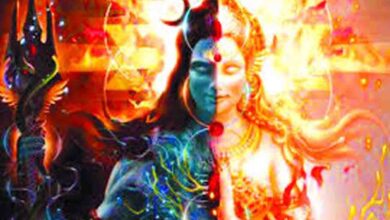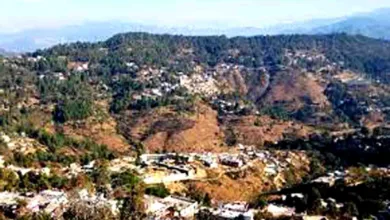Guest Column: Hawa, Pani and Dawa vis-a-vis Roti, Kapada and Makan

 VP Dimri
VP Dimri
It is believed that Roti, Kapada, and Makan are three essential and basic minimum requirements for sustaining life on the earth. Roti or bread signifies food which is essential for life and can be in any form. Kapada or clothes are equally important to protect the body whether the temperature is cold or hot. The third Makan is the roof in the form of a building, which is equally important as a shelter to live in. All these criteria apply to all countries in the world to have a better life. There are big jumps in arriving at a satisfying level for food, clothes and shelter in some countries but still, we need to work hard in some other countries.
Now, we are facing some other environmental problems. These are Hawa (air), Pani (water) and Dawa (medicine). The quality and quantity of these are important as they affect the life of all living beings including human beings, animals, plants, etc.
Hawa: In our earth system air is available in any corner of the planet including polar areas. It may be cold or hot. The main issue is that the quality of air should be good to sustain life for humans as well as animals. One can find differences in air quality of the area like mountainous areas may have better quality as compared to other places. For example, any area close to some factories without any precaution may have bad quality air as compared to other places where no such activities are going on. So, the quality of air depends on some measures taken to minimise pollution. One can conclude that the pollution is man-made. There should be strict rules that must be adhered to by the air polluting industries for instance coal plants, leather plants and textile industries, among others, to filter big particles from smoke before it is released into the air. Further, such industries must not be allowed near cities and housing colonies. There are many other examples in India where the air quality index is extremely poor due to various reasons such as climate change. Let us take an example of New Delhi where the air quality index is extremely poor particularly during some specific months. A detailed scientific study shows that certain polluted materials in the air can cause mental illness leading to depression. The study further identified that there is positive correlation between very poor air quality index and high number of suicide cases in China.
Pani: About 71 per cent of the earth’s surface is covered with water. The share of the ocean is around 97 per cent and the remaining three per cent of water in rivers, glaciers, lakes, groundwater, etc is available for drinking purposes. The availability of drinking water is about 1.2 per cent and the remaining 1.8 per cent is locked in glaciers, ice caps, or buried deep in the ground. The distribution of drinking water varies from countries or cities with places like Cairo, Beijing having less water. Chennai in India also suffers from a shortage of water. Surprisingly, water is scarce in Meghalaya where Cherrapunji which is considered to receive among the highest rainfall in the world. The problem here is all the rainwater runs off and nothing goes below ground. Here one can think of rainwater harvesting to minimise runoff.
The quality of drinking water differs around the globe. Some countries have better and a few countries have very poor quality. Norway, Finland and the United Kingdom are considered to have 100 per cent pure drinking water. Other European countries have better than 50 per cent pure drinking water. Some countries in Asia have below-average purity of tap water. According to a survey conducted by Yale University, USA, the pure quality of drinking water in India is 18.2 per cent. There are few other countries where purity is very poor.
Let us quickly review the status of the purity of drinking water in India. The best form of pure drinking water is rainwater but it immediately gets mixed up with rivers, lakes or the ground. If rivers or lakes are not clean then rainwater will also be unclean. On the other hand, the third-way water distribution other than runoff and evaporation is groundwater. Such water gets mixed up with subsurface soil and rocks. The soil and rocks carry some metals and so groundwater will carry such minerals. There are many examples in India like excess fluoride in Nalgonda district in Telangana. Arsenic contamination in the groundwater of West Bengal and other States is well known. Besides natural mixing, there is also man-made contamination of groundwater such as industrial waste, overflowing sewers, agriculture and oil.
Dawa: Human beings have used medicine for a long time depending upon availability. There is a small story we heard from our grandmother. Travelers in a jungle lost their way and after a long search, they saw some saints in a cave. The hungry travelers asked the saints for food and the saints told them they were consuming the nearby bulbous plants besides some other fruits available in the forest. The bulbous plant was garlic which is presently considered a medicine that helps in heart-related diseases. In Ramayana, we have an example where Lakshman, when unconscious, was saved using the Sanjeevani herb brought from the Himalaya. There are so many herbs that are used for various types of diseases. Similarly, there are medicines in other homoeopathy as well as in allopathy. With these, the average age of human beings has increased. The average age in India in 1947 was around 32 years which is today more than 70 years. There are many reasons for the increasing average age but the role of medicine is equally important. There are many government and private hospitals in the country. The government is equally concerned about general health. The main issue is the cost of medicine which is rising and is unaffordable to common citizens. Of course, there are many government initiatives for free medicine and at a much cheaper rate. There is the Jan Aushadhi Kendra system in many parts of the country where generic medicines with the same formula as the other popular ones in the market are sold at 1/10 price and sometimes even cheaper. However, currently, such centers are very limited. But there is more to be done in this direction as India being the world’s biggest pharmacy can make medicine more affordable to all of its citizens.
In conclusion, we need pure drinking water, better air and affordable medicine vis-a-vis Roti, Kapada and Makan. Governments and some NGOs are doing their best to protect the environment but societies must cooperate with various schemes launched by the government. Swachchh Bharat Abhiyan is one such initiative which the society must support.
(A Padma Shri recipient, the author is an eminent scientist who has worked in various institutions. Views expressed are personal)






